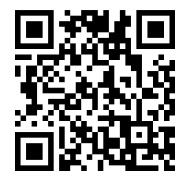中医药学是中华民族的伟大创造,也是打开中华文明宝库的钥匙。党和政府高度重视中医药工作,特别是党的十八大以来,以习近平同志为核心的党中央把中医药工作摆在更加突出的位置,中医药传承创新发展取得显著成绩,中医药文化交流传播版图不断扩大。《中医药文化传播行动实施方案(2021—2025年)》等政府文件对新时代中医药译介和传播事业再作长远擘画,作为推动中医药文化创造性转化、创新性发展的重要形式,中医药翻译正受到全社会越来越多的关注。为进一步弘扬中医药文化,促进中医药文化的对外交流与国际传播,助力中医药翻译的学术交流和学科发展,在前三届“时珍杯”全国中医药翻译大赛的基础上,世界中医药学会联合会李时珍医药研究与应用专业委员会再度携手永利集团官网首页中医药国际传播研究中心,联合举办第四届“时珍杯”全国中医药翻译大赛,推动中医药为构建人类卫生健康共同体贡献更大的力量。
主办单位:世界中医药学会联合会李时珍医药研究与应用专业委员会、永利集团官网首页中医药国际传播研究中心
承办单位:湖北省翻译工作者协会医学翻译委员会
指导单位:中华中医药学会翻译分会、湖北省翻译工作者协会
支持单位:上海文化贸易语言服务基地、中语智汇科技(厦门)有限公司、武汉译国译民教育科技有限公司
大赛具体事项如下:
一、赛事安排
1.报名及参赛时间
2022年9月25日——2022年11月1日。
2.参赛操作流程及注意事项
选手需先扫描打开下方二维码,按要求填写信息,完成在线报名。报名完成后,第二个工作日上午10:00后即可登录比赛系统答题。届时,请参赛选手根据提示,输入用户名及初始密码,登录比赛系统(伊亚笔译教学与语料软件:https://www.ventureoia.com/saipan/venture/home,支持Google Chrome、Firefox、Microsoft Edge、360浏览器极速模式,不支持平板、手机等移动端登录),修改初始密码后,重新登录系统,进入首页作业模块,选择相应组别试题,在线完成作答,并提交译文(提交译文后将无法更改,提交稿即为终稿;如暂不提交,请及时“保存”)。
【报名二维码】

【报名信息填写】在线报名时,选手须根据规范,自行设置用户名:用户名须包含6~16位字母或数字。初始密码888888。选手凭此用户名及初始密码登录比赛系统。
【报名咨询电话】报名过程中,如有问题,请联系徐老师(18627883831)。
【大赛系统技术支持电话】比赛系统使用过程中,如有任何技术问题,请联系许老师(15807198803)。
【大赛操作流程图解说明】

3.参赛译文提交注意事项:
(1)文档内容只包含译文,请勿添加脚注、尾注、译者姓名、地址等任何个人信息,否则将被视为无效译文。
(2)译文内容与报名时选择的参赛组别须一致,不一致视为无效参赛译文。如:选择参赛组别为英译汉,提交译文内容若为汉译英,则视为无效译文。
(3)2022年11月1日24时之前未提交参赛译文者,视为自动放弃参赛资格,组委会不再延期接受参赛译文。每项参赛译文提交后将无法更改,仅译文一稿有效,不接受修改稿。
(4)为避免11月1日服务器过度拥挤,请尽量提前完成翻译,提交译文。
4.大赛评审
大赛评审包括线上线下初评、复评和终评三个环节。我们将邀请从事中医
翻译教学研究的专家进行认真评审,确定最终获奖名单。
5.信息发布
2022年9月25日发布大赛启事及参赛方式,2022年11月公布获奖信息。相关信息发布媒体:
永利集团官网入口登录微信平台(微信号:gh_ef4dc14d833d);
永利集团官网入口登录网站(网址:);
世界中联李时珍医药研究与应用专业委员会微信平台(微信号:gh_27579c5b0542)。
6.颁奖典礼及学术报告
请关注信息发布媒体,时间、地点和方式将另行通知。
二、参赛规则
1.参赛形式:本届大赛分汉译英组(笔译)与英译汉组(笔译)两组形式,
参赛选手可只选其中一组,也可同时选择两组,同时获奖的选手将获得各相应的证书和奖品。
2.选手范围:对选手国籍、年龄、性别、学历等不作限制。
3.组织纪律:参赛稿件须独立完成,一经发现抄袭,将取消参赛资格。自
公布大赛原文起至提交参赛译文截稿之日止,参赛者请勿在任何媒体公布自己的
参赛译文,否则将被取消参赛资格,并承担相应法律后果。
三、奖项设置
1.个人奖(汉译英组)
特等奖1名 获奖证书+奖品A
一等奖2名 获奖证书+奖品B
二等奖3名 获奖证书+奖品C
三等奖4名 获奖证书+奖品D
优秀奖10名 获奖证书
2.个人奖(英译汉组)
特等奖1名 获奖证书+奖品A
一等奖2名 获奖证书+奖品B
二等奖3名 获奖证书+奖品C
三等奖4名 获奖证书+奖品D
优秀奖10名 获奖证书
3.指导教师奖
特等、一等、二等、三等奖选手的指导老师可获得相应的指导教师奖(可无指导教师),并颁发获奖证书。
4.优秀组织奖
大赛设优秀组织奖若干名,欢迎各单位积极宣传并组织参赛。
四、参赛费用
本大赛为社会公益性翻译赛事,无需缴纳任何费用。
五、联系方式
为确保本届赛事公平、公正、透明地进行,特成立大赛组委会,负责整个大赛的组织、实施、评审等各项工作。组委会办公室设在永利集团官网入口登录中医药国际传播研究中心(X533办公室)。
联系人:
毛老师电话:139 8618 7098
王老师电话:150 7100 2200
黄老师电话:189 8611 6448
附件:
第四届“时珍杯”全国中医药翻译大赛原文
【汉译英原文】
中医方剂有天地
中医方剂并非单纯的药物堆积和药物功效的简单累加,而是相关药物的复杂配方以及各味药物作用的相互影响。正是这种复杂的相互作用,使得方剂如此有效。也正是这种复杂的相互作用,使得方剂难以学习研究。
每种单味药都各有所长,也各有所短。一副有效方剂中,各味药物需要慎重配伍,增强功效,降低副作用。方剂中各味药进行组合,构成新的药剂。方剂与单味药相比,功效更好,疗效更全面。
要了解这些药物如何相互作用,首先必须了解单味药的功效和特性,还必须熟悉一些特定的配伍关系。这些特定的配伍关系可看作方剂的结构要素。例如,桂枝和白芍的结合使用是桂枝汤和小建中汤的重要结构要素,可达到调和营卫、解肌发表、温补中焦的作用。
有效方剂需要的不仅仅是简单地将各味药物放在一起以获得特定效果,还需要有组方原则的指导,才能以最佳方式遣药组方。方剂中各味药的有序组合也可称为一种等级关系。
中国传统社会历来十分重视社会阶层关系,而这首先涉及到的就是皇帝和宫廷。因此,方剂中用以表示各种药物重要性或等级的术语就借用了宫廷术词。一副方剂中药物的成分等级关系有四个层次,分别是:君、臣、佐、使。
临床上,药物君、臣、佐、使的等级划分并不那么明确。虽然方剂都要求有君药,但有时由于方剂各味药物的作用很平衡,很难区别各自的功用等级。例如在五味消毒饮和五皮散中,各味药物就处于相同的作用等级。
组方,不仅要掌握上述组方原则,还需要相当大的灵活性。要根据患者的具体情况,予以灵活化裁。必须根据病症、患者体质、季节、气候及其他环境因素等情况变化,灵活组方。这包括药味加减、药量多寡、制备方法和服用方法的变换。根据患者具体情况加减选方的能力,可区分良医和庸医。
【英译汉原文】
The Role of TCM in Fighting against COVID-19 in China
From the first stage of the response to COVID-19 in China (up to 28 April 2020) the treatment model incorporated both TCM and conventional medicine in an integrated approach. TCM was particularly used as an intervention in clusters of infections. In the second stage of response (from 29 April 2020 onwards), TCM was applied in provincial and city hospitals in the early stages of disease, with specialists in both TCM and conventional medicine cooperating closely in ward visiting and consultations, and working together to formulate diagnosis and treatment plans.
The core principles and practices of TCM remain the same, with treatment being adjusted according to different patterns on the basis of the national protocol. Early TCM intervention was important because it helped to reduce progression to serious disease, including in older patients. Significant outcomes have been claimed following treatment – including TCM medicines combined with specific acupuncture, moxibustion, transdermal therapy and Tai Chi exercises–of patients with mild or moderate COVID-19. For patients with severe disease and in a critical condition, TCM intervention was applied as an accompaniment to conventional medicine. It was noted that the proportion of patients progressing to severe disease appeared to be reduced among those receiving TCM. A number of cases of recovery following TCM intervention were provided as examples, noting interventions designed for specific symptoms such as anorexia and fatigue.
It was also suggested that TCM could assist in the prevention of COVID-19 illness. During the long lockdown in Wuhan, the public were encouraged not only to maintain a healthy lifestyle and ensure their personal hygiene but also to follow a TCM diet with items such as Chinese yam, Chinese dates and Goji berries. Members of the TCM team took supplies of TCM herbs to communities and delivered TCM items to patients’ doors. As people recovered from COVID-19 infection, many who were discharged from hospital still had complaints such as tiredness, anorexia, shortness of breath, insomnia and emotional instability. TCM was therefore also used to ease discomfort and speed recovery.
In summary, the speaker pointed out that TCM had a role to play at all stages of viral infection as follows.
Prevention–during lockdown many people voluntarily chose to consume plants and herbs with medicinal value. They were encouraged to do so as such foods can help stimulate the immune system and promote health and wellness.
Mild and moderate disease–the RCTs data indicates that TCM was seen to shorten the time to resolution of symptoms, viral clearance and to reduce the proportion of patients progressing to severe disease.
Severe and critical disease–patients were treated with conventional medicine along with TCM. It was felt that this combined approach both shortened the length of stay in intensive care and reduced the duration of mechanical ventilation. It was claimed that TCM reduced mortality among critically ill patients.
Convalescence–TCM serves as the main pillar of care at this stage. TCM interventions were reported to improve clinical symptoms and the quality of life.
The speaker indicated that the advantages of TCM in a pandemic situation include the wide availability of the herbal medicine ingredients and the speed with which TCM can be used to intervene at an early stage of illness. The aim was to boost the immune system before the infection develops and, where severe disease does occur, to assist in recovery by reducing sepsis and emotional disturbance. In conclusion, it was stated that the Chinese approach to COVID-19 was based on the integration of TCM and conventional medicine. Thus, TCM played–and continues to play – a key role in reducing the impact of the pandemic.